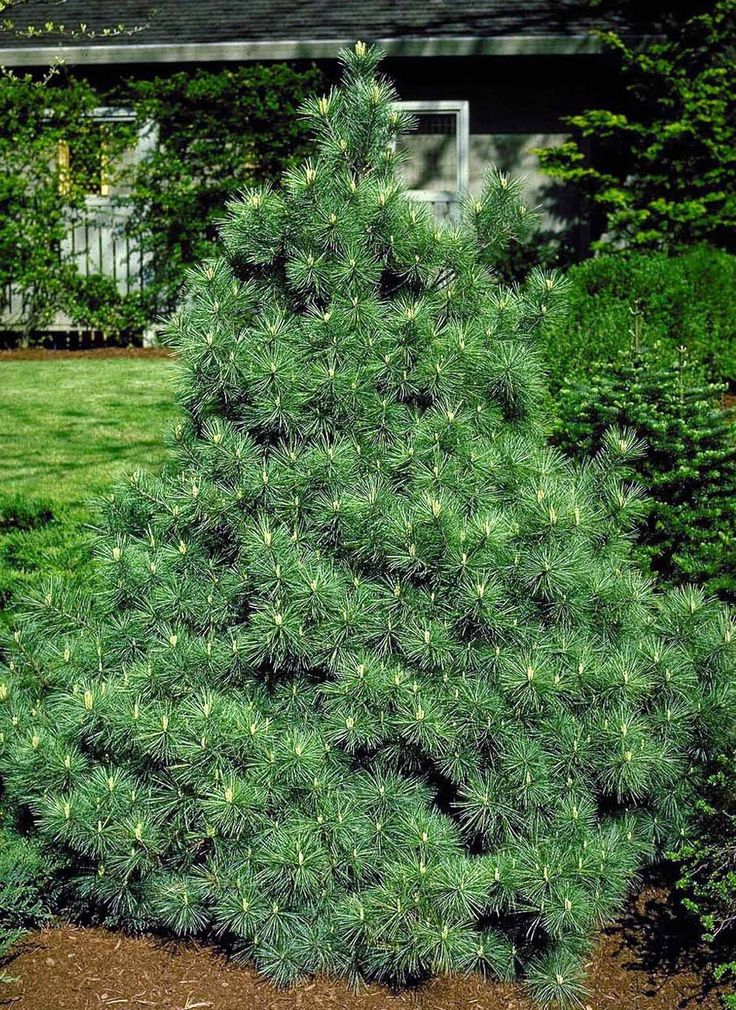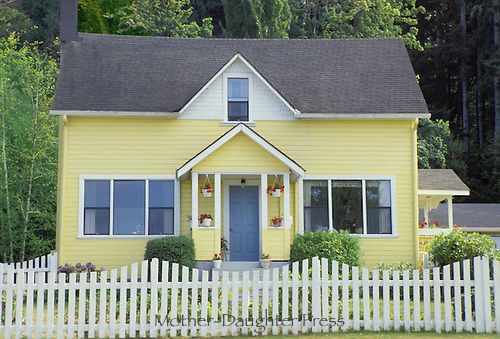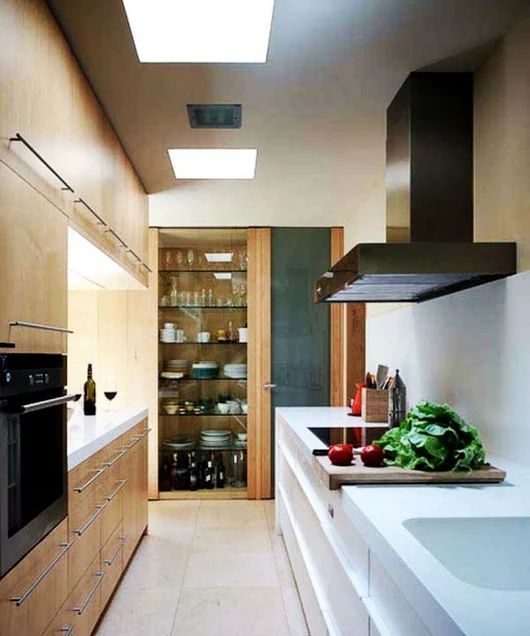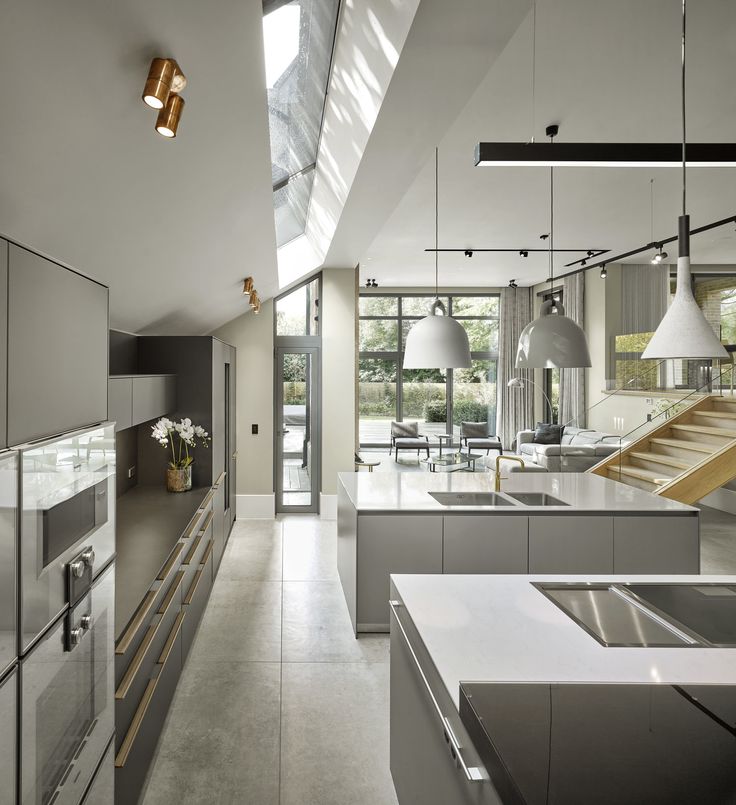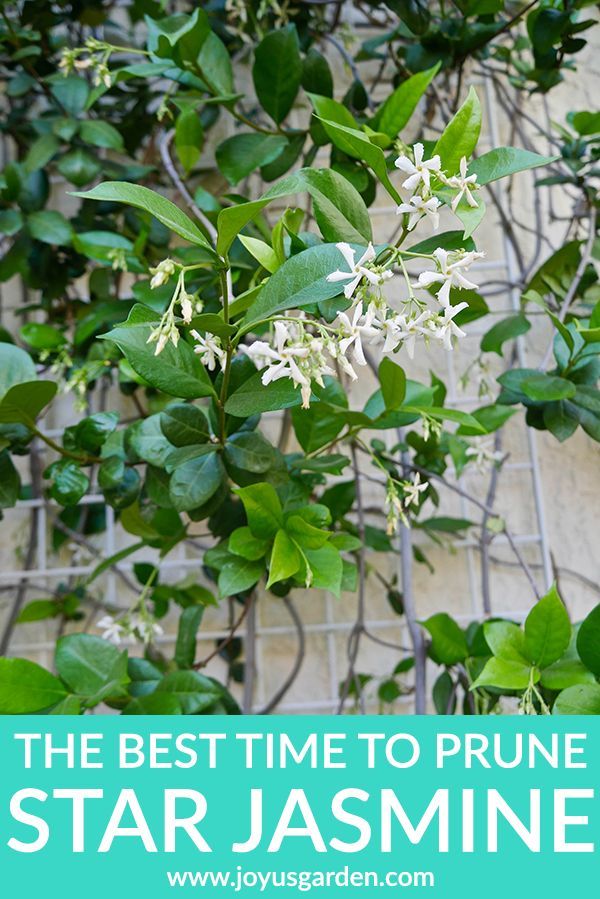Tall fast growing evergreen shrubs
18 fast growing evergreen shrubs
Fast growing evergreen shrubs are on everyone’s wish list because they can quickly create a tall privacy screen or landscaping hedge. But while there are certainly many to choose from, certain species are a better choice for some locations than others. Let’s look at 18 of the quickest-growing evergreens so you can find the right plant for your space.
1. Green Giant Arborvitae
2. Leyland Cypress
3. Spartan Juniper
4. Prague Viburnum
5. Moonglow Juniper
6. Emerald Green Arborvitae
7. Sprinter Boxwood
8. Hicks Yew
9. Nellie Stevens Holly
10. Cherry Laurel
11. Sunshine Ligustrum
12. Manhattan Euonymus
13. Victory Pyracantha
14. Hollywood Juniper
15. Red Dynamo Photinia
16. Green Velvet Boxwood
17. Wax Myrtle
18. Allegheny Viburnum
FAQs
What are the best fast-growing tall shrubs for privacy?
What are the best fast-growing evergreen shrubs for the shade?
References
More landscaping shrubs
1.
Green Giant Arborvitae (Thuja standishii x plicata ‘Green Giant’) is one of the fastest-growing shrubs available (evergreen or not). This extra-large hybrid can grow 2-3 feet taller each year until it reaches its mature size of 40-50 feet tall and 8-12 feet wide. While they are shaped like shrubs, their final height makes them seem more like fast growing evergreen trees!
‘Green Giant’ is used most commonly as a privacy screen, large hedge, or as an accent specimen. This variety certainly is fast growing, but it should only be used where there is space for them to be 30+ feet tall at maturity, unless you can commit to shearing them a few times every year. For a low-maintenance alternative in a smaller space, choose ‘Emerald Green’ (discussed later in this article).
Arborvitae grows most quickly when planted in a full sun location where the foliage receives a minimum of 6 hours of direct sunlight daily. They will also tolerate partial shade, but the growth rate will be noticeably slower.
Green Giant Arborvitae can be grown in Zones 5-8 (check the USDA Plant Hardiness Zone Map if you don’t yet know your local zone number). If you live in an area with harsh winters, this plant is perfect for you as it can resist both heavy snow and high winds.
2. Leyland Cypress
Leyland Cypress (Cupressus × leylandii) is a fast-growing coniferous plant used commonly in landscaping for low-maintenance hedges and privacy screens. This vigorous hybrid has a shrub-like shape, but can grow to be taller than many landscaping trees. Leyland Cypress trees routinely grow 3-4 feet per year, reaching a massive mature size of 60-70 feet tall and 15-20 feet wide.
Because they are such fast growing evergreen trees, Leyland Cypress plants are most commonly used as a tall hedge or perimeter plant on large-scale properties. The rapid growth rate and tall mature height make this tree an ideal choice for blocking out unwanted views or noise. This species is also tolerant of shearing, so it can be easily shaped into a more manicured look if desired.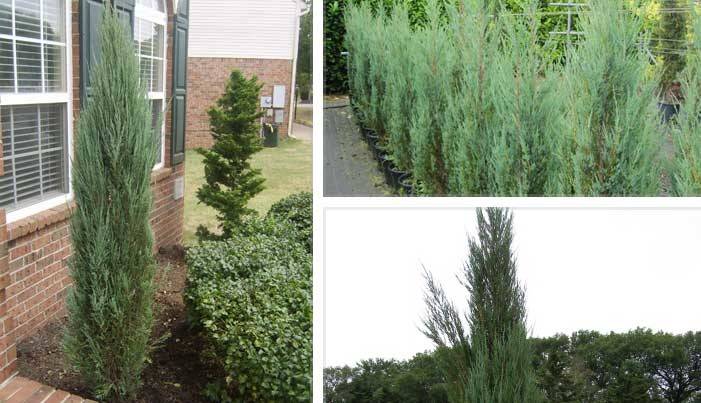
This plant prefers a sunny planting location, but can tolerate partial shade (although the growth rate will be slower as sunlight availability decreases. Due to their large size and long limbs, these trees are not the best choice in windy areas or climates where ice tends to form on the branches (choose Green Giant Arborvitae for a stronger option where a large shrub is desired).
Leyland Cypress can be grown in Zones 5-9.
3. Spartan Juniper
Spartan Juniper (Juniperus chinensis ‘Spartan’) is a popular coniferous evergreen. While not the fastest growers on the block, they do grow a respectable 12-18 inches per year. These plants reach a mature size of 15-18 feet tall and 4-5 feet wide.
These fast growing shrubs are most commonly used as privacy screens, foundation plants or medium-tall hedges. The dense foliage provides year-round screening and can withstand heavy shearing if needed. Junipers are also one of the most deer-resistant choices in terms of evergreens.
Spartan Junipers prefer full sun but can tolerate partial shade. Avoid planting them in full shade. For fastest growth, work in some organic matter to the soil prior to planting and then keep them well-watered for the first 1-2 years after planting.
Spartan Junipers can be grown in Zones 4-9.
4. Prague Viburnum
Prague Viburnum (Viburnum x pragense) is a hybrid cross between two other Viburnum species. These medium-sized shrubs typically reach 8-10 feet tall and 6-8 feet wide at maturity. The rate of growth is rapid, with Prague Viburnums adding about 2 feet of new growth each year.
This plant can act as a hedge, screen, or windbreak. It also makes an excellent accent plant. The lustrous, dark green leaves of the beautiful evergreen shrub remain throughout even the harshest Midwestern winters. In early spring, lovely pink buds develop into lightly fragrant, creamy white flowers.
Viburnum grow most rapidly in full sun, but are tolerant of partially shady conditions.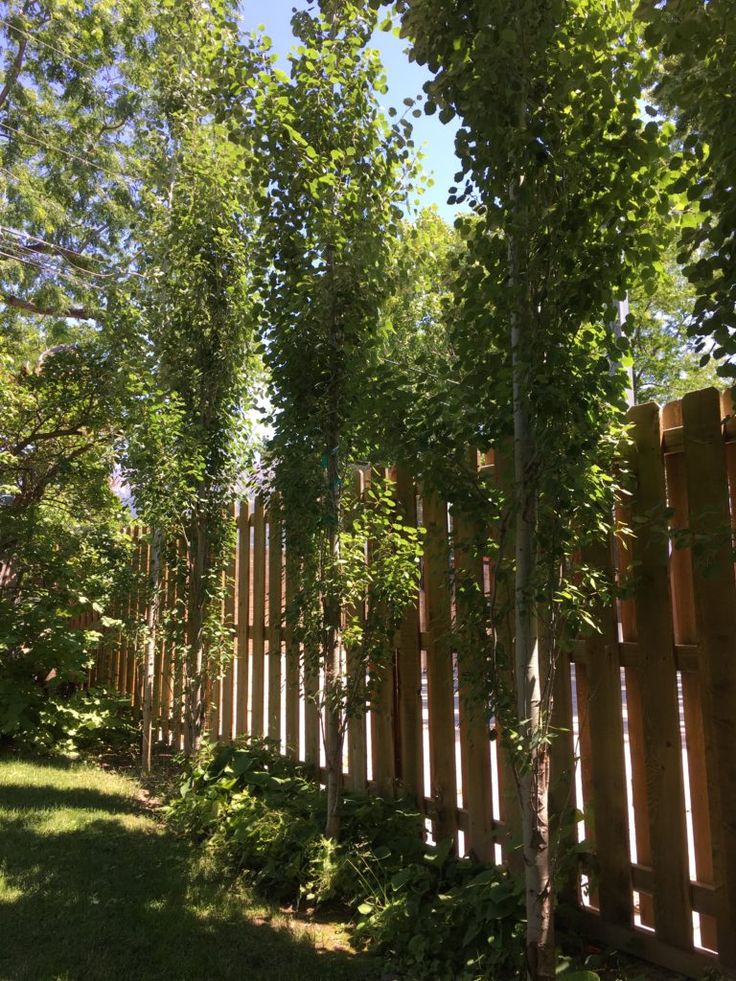 Prague Viburnums can be grown in Zones 5-8.
Prague Viburnums can be grown in Zones 5-8.
5. Moonglow Juniper
Moonglow Juniper (Juniperus scopulorum ‘Moonglow’) is a tall evergreen shrub with attractive silvery-green foliage. With a growth rate of about 2 feet in height each year, these popular plants reach a mature size of 18-20 feet tall and 6-8 feet wide.
‘Moonglow’ is most commonly used as a hedging plant or for a tall privacy screen. The plants have a natural pyramidal form and are very low-maintenance (unless being sheared regularly into a formal hedge). Juniper is also common as a grouped planting in wildlife gardens, as this native plant is a favorite songbird habitat.
Moonglow Juniper grows best in full sun, and is not tolerant of shady conditions. That said, this plant is very cold-hardy and can be grown in Zones 3-7.
6. Emerald Green Arborvitae
Emerald Green Arborvitae (Thuja occidentalis ‘Emerald Green’) is an evergreen conifer with dense, lush green foliage. This popular landscaping plant can grow 1-2 feet taller each year in optimal conditions.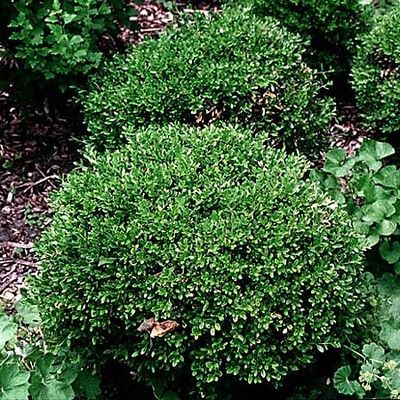 This variety of Arborvitae reaches a mature size of about 10-15 feet tall and 3-4 feet wide.
This variety of Arborvitae reaches a mature size of about 10-15 feet tall and 3-4 feet wide.
‘Emerald Green’ is used most commonly as a hedge plant because it creates such a dense hedge. The mature height of just over 10 feet makes them perfect for privacy screens in urban locations. These shrubs can also be used for topiary and can withstand container planting for several years if required.
Emerald Green Arborvitae grows most quickly when the plant receives full sun (a minimum of 6 hours of direct sunlight daily). Specimens grown in partial sun to shade don’t grow as vigorously. Optimal growth also requires adequate soil moisture.
Emerald Green Arborvitae can be grown in Zones 4-8.
7. Sprinter Boxwood
Sprinter Boxwood (Buxus microphylla ‘Bulthouse’) is one of the fastest-growing boxwood varieties available. These quick-growers reach their mature size of 2-4 feet tall and 2-4 feet wide in only a few years. The rate of growth depends upon growing conditions, and can vary from about 4 inches per year in poor conditions up to 10-12 inches per year in an ideal environment.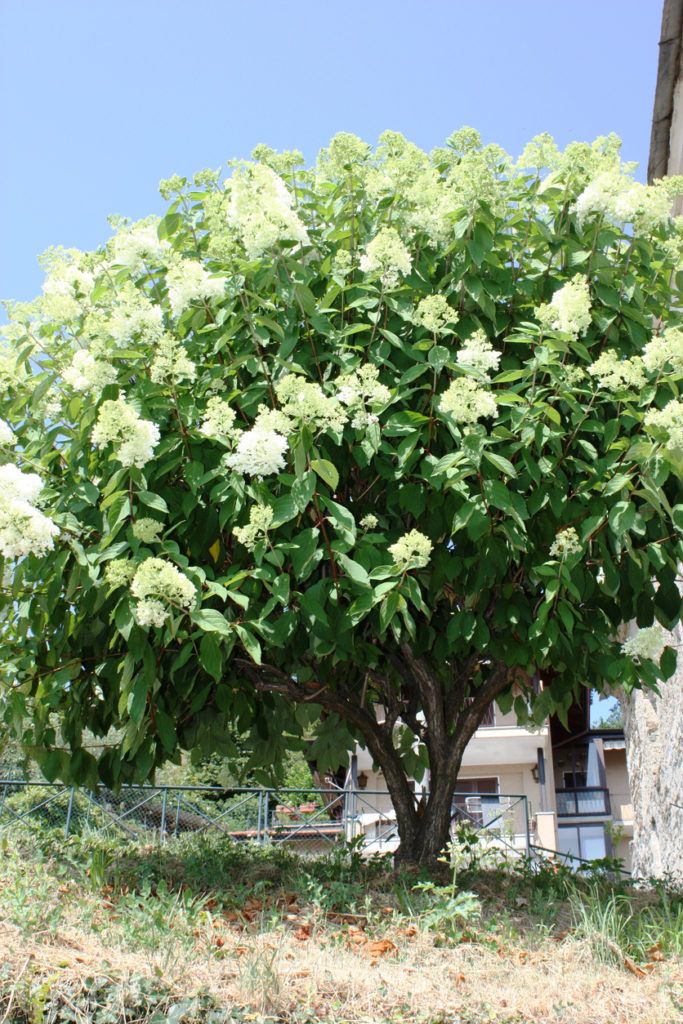
This boxwood cultivar is commonly used as a foundation planting, hedge plant, border shrub, or specimen planting/accent plant. The shrubs can be left unpruned for a natural look or sheared into a tight linear form.
Sprinter Velvet Boxwood grows best in full sun but is tolerant of partial shade. It can be grown in Zones 5-8.
8. Hicks Yew
Hicks Yew (Taxus x media ‘Hicksii’) is a dark green needled shrub often used for hedges or privacy screens. These shrubs grow more slowly than Arborvitae or Juniper, but still put on a respectable 6-10 inches per year (depending upon conditions). Mature Hicks Yew can reach 10-15 feet tall and 3-6 feet wide.
‘Hicks’ is most commonly used as a barrier planting. Yew is particularly good at filling in dense foliage on bare limbs, making it somewhat self-healing. So while they don’t grow in height as fast as arborvitae, they may be a better long-term choice. These plants can also be sheared into topiary shapes.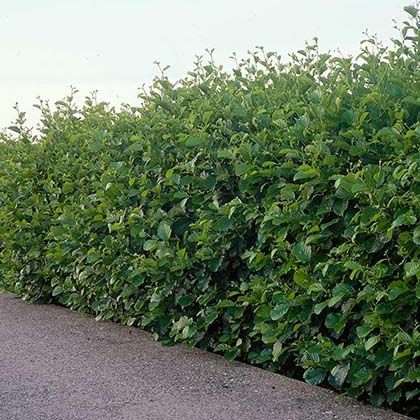
Hicks Yew is tolerant of a wide range of sun exposure, from sunny all day to partial shade. It can be grown in Zones 4-8.
9. Nellie Stevens Holly
Nellie Stevens Holly (Ilex x ‘Nellie Stevens’) is a hybrid holly that is prized for its dense, glossy green foliage. Nellie Stevens Holly can grow 2-3 feet each year, reaching a mature size of 15-25 feet tall and 8-15 feet wide.
This holly cultivar is commonly used as a privacy hedge or as staggered plants along a fenceline or walkway. Its use in garden design is quite versatile, as it can be left unpruned for a natural look or sheared into a formal hedge.
Nellie Stevens Holly grows best in full sun but will certainly tolerate some shade. These shrubs are hardy in Zones 6-9.
10. Cherry Laurel
Cherry Laurels (Prunus laurocerasus) are tall broadleaf evergreen shrubs known for their shiny dark green leaves and showy white flowers. These fast-growing flowering evergreens typically grow about 2 feet per year to reach a mature size of 10-12 feet tall and 8-10 feet wide.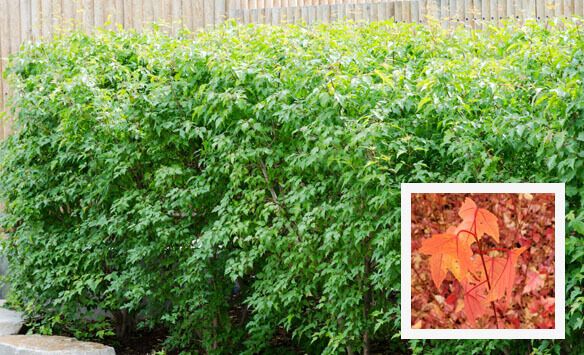
Cherry Laurel shrubs are commonly planted as a fast growing lowering hedge or evergreen living fence. Cherry Laurel makes a great year-round privacy screen. A single plant can also be planted alone as a specimen shrub. The flowers attract pollinators, and then the blossoms ripen into small red fruits that feed the birds.
These shrubs grow best in full sun, but are also tolerant of partial shade. Laurel is also semi-tolerant of salty soil. Cherry Laurel can be grown in Zones
11. Sunshine Ligustrum
Sunshine Ligustrum (Ligustrum sinense ‘Sunshine’) is a small evergreen shrub known for its bright golden-green foliage. A variety of Privet, this fast-growing shrub grows about 1 foot a year to quickly reach a mature size of about 3-4 feet tall and 3-4 feet wide.
Sunshine Ligustrum is resistant to many common pests and diseases, and also resistant to many environmental conditions. It is resistant to deer and pest insects, as well as to mildew fungal diseases. Ligustrum is typically both drought and heat tolerant once established. This small shrub can be planted as a single specimen, a grouping of specimens, or as a low border along a walkway.
Ligustrum is typically both drought and heat tolerant once established. This small shrub can be planted as a single specimen, a grouping of specimens, or as a low border along a walkway.
Sunshine Ligustrum grows best in full sun. This plant can be grown in Zones 6-10, but will likely only be evergreen in Zones 7 and up. Gardeners in Zone 6 can expect some leaf drop during wintertime due to cold temperatures.
12. Manhattan Euonymus
Manhattan Euonymus (Euonymus kiautschovicus ‘Manhattan’) is a fast growing evergreen shrub. These vigorous plants look a bit like giant boxwoods but grow twice as fast. In good conditions they put on about 1 foot of height per year, eventually reaching a mature size of 6-8 feet tall and 4-6 feet wide.
Euonymus shrubs make wonderful informal hedges and can be used on their own or as a backdrop plant for a garden bed. They can also be trimmed into a more formal look or trellised along a wall.
Manhattan Euonymus grows best in full sun but is quite tolerant of shade.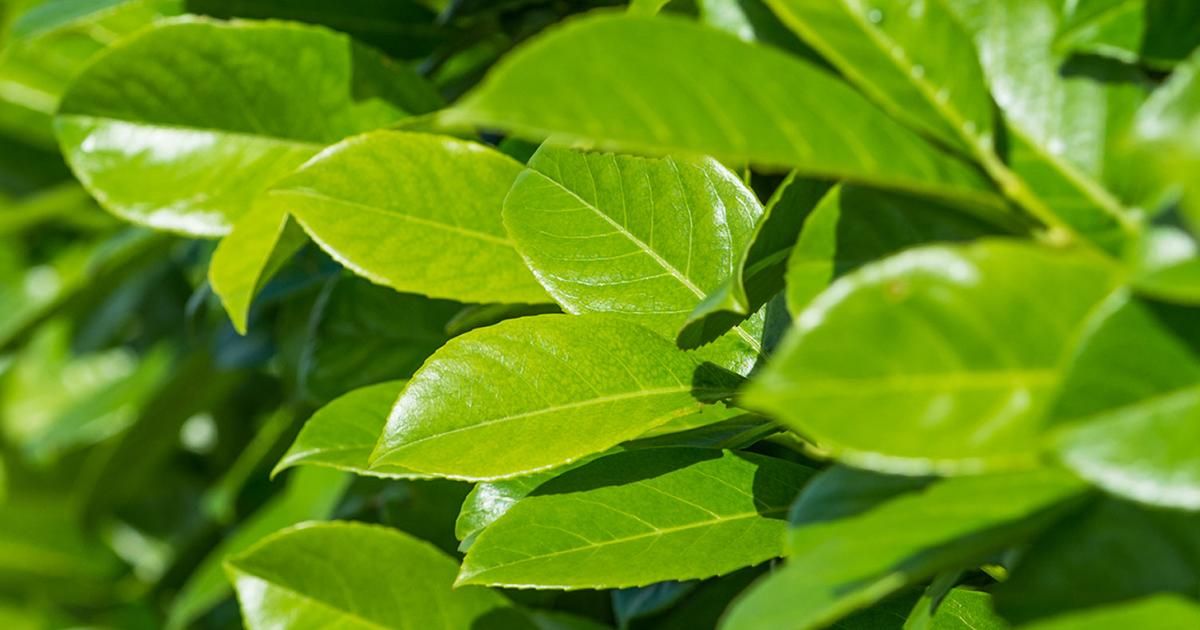 While the plant won’t grow as vigorously in full shade as it would in full sun, it still manages to put on quite a bit of growth each year. This plant thrives in Zones 5-8.
While the plant won’t grow as vigorously in full shade as it would in full sun, it still manages to put on quite a bit of growth each year. This plant thrives in Zones 5-8.
13. Victory Pyracantha
Victory Pyracantha (Pyracantha koidzumii ‘Victory’) is a fast growing flowering shrub known for its thorny stems and brightly colored red berries. This cultivar grows about a foot per year in good conditions. It reaches a mature size of 8-10 feet tall and 6-8 feet wide at maturity.
In large spaces, Pyracantha is often used as a thorny barrier planting, such as a hedge, windbreak, or privacy screen. The species is also popular in wildlife gardens due to the attractiveness of the berries with the birds. In smaller sites, this plant can be grown up against a wall or fence and trained along the surface rather than left to develop naturally into a rounded bushy form.
Victory Pyracantha is best planted in sunny spots where the leaves can get enough bright sunlight for photosynthesis to create energy to produce berries. This plant thrives in Zones 7-9, and is most popular in coastal regions.
This plant thrives in Zones 7-9, and is most popular in coastal regions.
14. Hollywood Juniper
Hollywood Juniper (Juniperus chinensis ‘Torulosa’) is a tall coniferous shrub with unique twisted foliage. These fast-growing shrubs put on 1-2 feet in height yearly to reach a mature size of about 15 feet tall and 10 feet wide.
This juniper cultivar is a superstar! It is most often used as a feature plant to mark gateways or to soften the look of privacy walls. While the natural form is rustic and gorgeous, it can also be made into a specialty topiary.
Hollywood Juniper grows best in sunny planting locations. This plant thrives in Zones 5-9.
15. Red Dynamo Photinia
Red Dynamo Photinia (Photinia glabra ‘Parsur’) is a southern evergreen that can take the heat and stay looking great throughout the year. This plant reaches a mature size of 8-10 feet tall and 5-7 feet wide, making it the perfect size for a privacy hedge at street level. It’s also a quick grower, gaining 2-3 feet of height per year when young.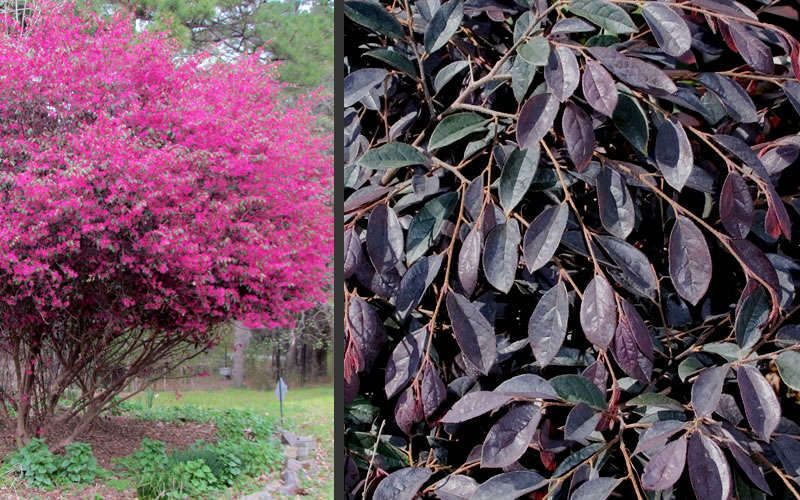
This gorgeous and healthy plant is perfect for a privacy screen or hedge, as it’s resistant to pests and disease. The burgundy-red leaves are beautiful against the dense, upright form, which rarely needs pruning.
Photinia is a popular choice for hedges and landscapes in mild winter regions because of its rapid growth and colorful new foliage. You can also use it in your side yard as a living fence for some nice foliage.
Photinia is typically planted in full sun. This plant can be grown in Zones 7-11.
16. Green Velvet Boxwood
Green Velvet Boxwood (Buxus x ‘Green Velvet’) is a spreading broadleaf evergreen. These rounded shrubs typically reach a mature size of 3-4 feet tall and 3-4 feet wide. While not the fastest-growing evergreen, this cultivar is certainly one of the fastest-growing boxwoods, typically growing about 6 inches per year in good conditions.
This boxwood variety naturally grows into a rounded sphere shape. You can let the plant fill out naturally or shear it into a tight ball for a more formal look.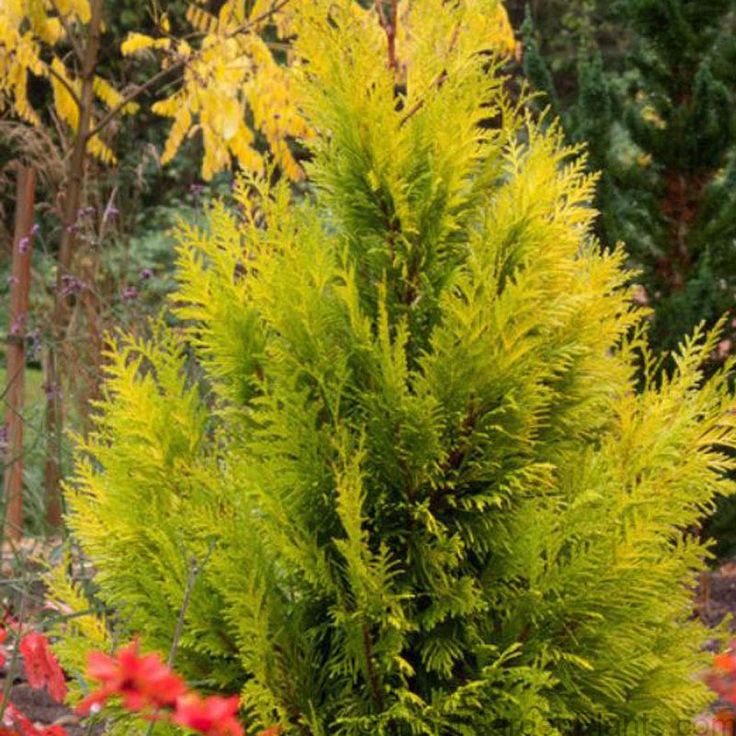 Individual plants can be planted alone or in groupings (geometric or more organic). Green Velvet Boxwood is also quite commonly used to create a mid-height formal boxwood hedge (usually about 3 feet tall).
Individual plants can be planted alone or in groupings (geometric or more organic). Green Velvet Boxwood is also quite commonly used to create a mid-height formal boxwood hedge (usually about 3 feet tall).
Green Velvet Boxwood grows best in full sun but is tolerant of partial shade. This shrub grows best in Zones 5-9 and is resistant to winter bronzing at the cooler end of this range.
17. Wax Myrtle
Wax Myrtle (Myrica cerifera) is a large broadleaf evergreen shrub. This quick-grower can easily put on 2-4 feet of height per year. It develops dense foliage and often reaches a mature size of about 15 feet tall and 15 feet wide.
These tall shrubs are perfect for privacy screens and tall hedges, as they keep their leaves year-round in most climates. With their dainty green-yellow flowers, they also make a wonderful living backdrop for your perennial beds or for a wildlife garden space (the birds love the fruit in the wintertime).
Wax Myrtle grows best in sun but is tolerant of partial shade.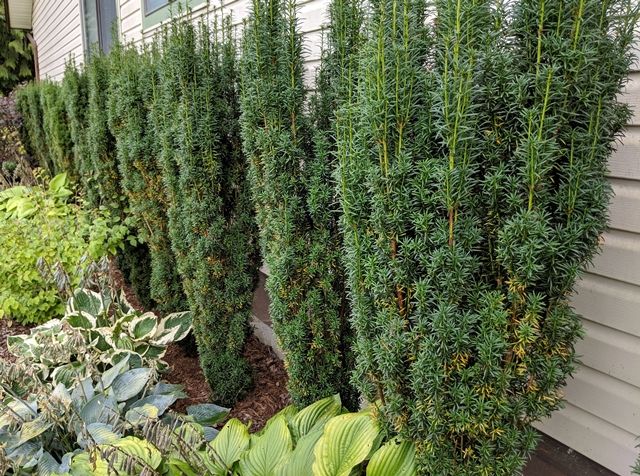 This plant is for warmer climates, and thrives in Zones 7-11.
This plant is for warmer climates, and thrives in Zones 7-11.
18. Allegheny Viburnum
Allegheny Viburnum (Viburnum rhytidophylloides ‘Allegheny’) is a quick-growingj m shrub with white flowers and red fruit. These plants grow 1-2 feet per year. The mature size is generally about 10 feet tall and 10 feet wide.
Viburnum can be planted alone as a feature plant where its lovely white flowers are the star of the show, but also makes a wonderful hedge. Use it as a mid-height privacy screen or as a windbreak on an open property. The birds will also love the fruit in the fall!
Allegheny Viburnum will produce flowers best in a sunny spot but is tolerant of shade. This plant can be grown in Zones 5-8, but may loose its leaves towards the cooler end of this range (Zones 5-6), especially during harsh winters, and should be considered more like deciduous shrubs in those areas.
FAQs
What are the best fast-growing tall shrubs for privacy?
Emerald Green Arborvitae (Thuja occidentalis ‘Emerald Green’)
Spartan Juniper (Juniperus chinensis ‘Spartan’)
Oak Leaf Red Holly (Ilex x ‘Conaf’)
Moonglow Juniper (Juniperus scopulorum ‘Moonglow’)
Leyland Cypress (Cupressus × leylandii)
What are the best fast-growing evergreen shrubs for the shade?
Rosebay Rhododendron (Rhododendron maximum)
Hicks Yew (Taxus x media ‘Hicksii’)
California Privet (Ligustrum ovalifolium)
Prague Viburnum (Viburnum x pragense)
Blue Princess Holly (Ilex x meserveae ‘Blue Princess’)
Resources
- Small evergreen shrubs
- Tall evergreen shrubs
- Low-maintenance evergreen shrubs
- Best evergreen shrubs for front of house
- Fast-growing evergreen shrubs
- Best evergreen shrubs for privacy
- Evergreen flowering shrubs
- Small evergreen flowering shrubs
References
- Colorado State University Extension, Evergreen Shrubs
- University of Missouri Extension, Selecting Landscape Plants: Broad-leaved Evergreens
- University of Minnesota Extension, Choosing evergreens for your landscapes
- PennState Extension, Evergreen Native Plants
More landscaping shrubs
Time to add some shrubs to your landscape to brighten things up year-round, provide privacy, and perhaps even some flowers?
7 Fast Growing Evergreen Trees and Shrubs
- Share
- Tweet
If you’re looking for ideas for fast growing evergreen trees and shrubs, this post is for you! When you’re adding plants, it can get expensive. You want to make sure you are getting the most value for your money as well as quick results. And bonus points if they stay green all year! Check out these fast-growing evergreen trees and shrubs you can add to your landscape.
You want to make sure you are getting the most value for your money as well as quick results. And bonus points if they stay green all year! Check out these fast-growing evergreen trees and shrubs you can add to your landscape.
When it comes to landscaping, we can be a bit impatient. That’s why these fast-growing varieties are perfect. There are choices like Leyland Cyprus, Green Giant Arborvitae, and Magnolias just to name a few. Evergreen means they keep their foliage year-round and fast-growing typically means several feet per year.
Not all trees and shrubs grow at the same rate. Some take years! Some trees and shrubs are planted for their slow-growing small stature. Not everyone wants or needs large trees. But if you do, make sure you choose a fast-growing tree or shrub.
Case in point – A Gingko tree. One of the most gorgeous trees around. In the fall, the leaves are the most stunning yellow color and it has a beautiful shape. But. It grows at a snail’s pace.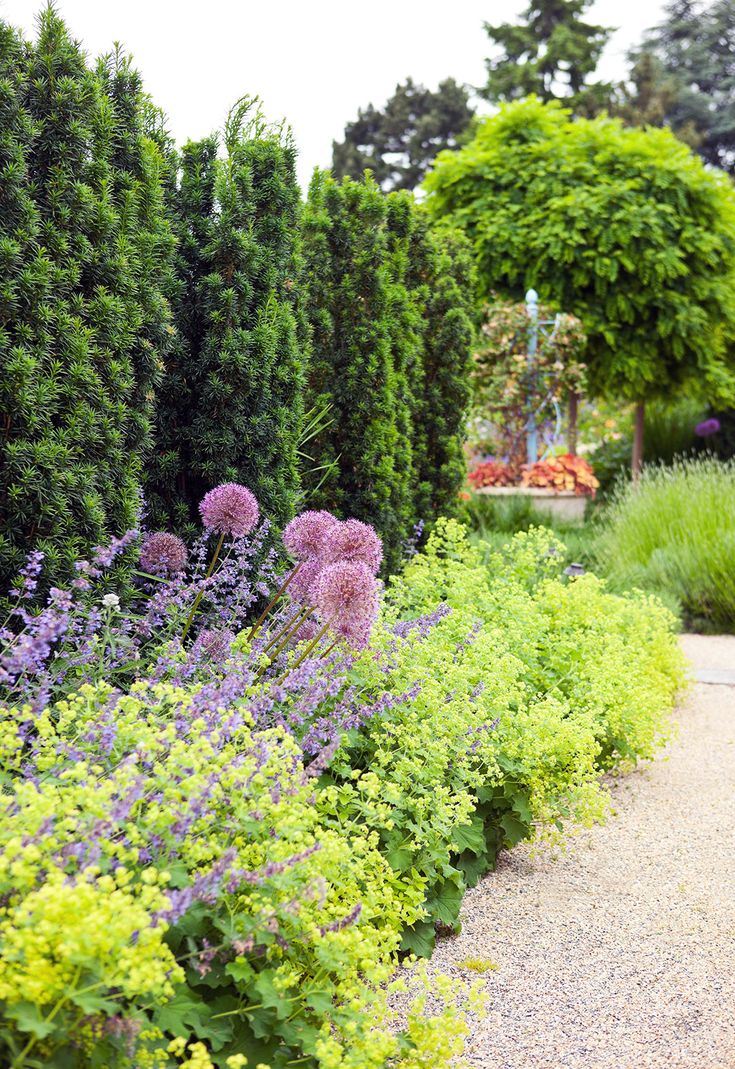 Like a sloth. I’ve been in love with these trees for years and finally got one for Mother’s Day one year. Maybe in another 30 years, I’ll be able to enjoy it!
Like a sloth. I’ve been in love with these trees for years and finally got one for Mother’s Day one year. Maybe in another 30 years, I’ll be able to enjoy it!
But back to the point. Fast growing is what we’re after today! Not sloths!
What is the definition of a fast growing tree?
Fast growing trees will grow several feet per year. If you put this in comparison with a slow growing species like the ginkgo tree, it’s a tremendous difference.
This post contains affiliate links. We are a participant in the Amazon Services LLC associates program, an affiliate advertising program designed to provide a means for us to earn fees by linking to Amazon, and other affiliate programs. See my full disclosure here.
What is the fastest growing evergreen tree?
There are varying opinions and of course it also depends on your planting zone and conditions, but the Murray Cypress tree tends to top the list of the fastest growing evergreen tree.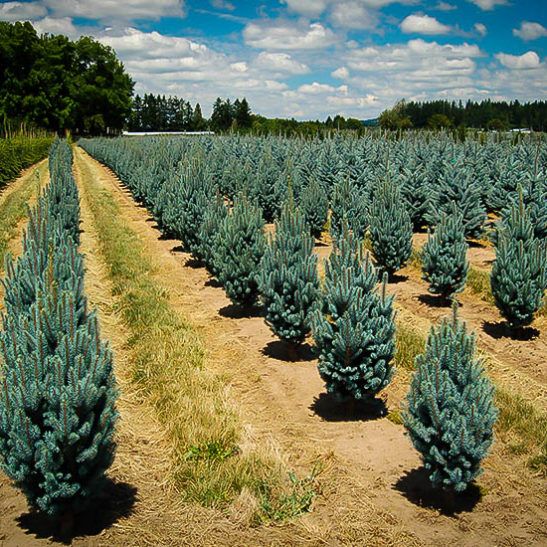 It can shoot up 4 feet in one year. In three years, you could potentially have a 12 foot hedge of privacy with these trees!
It can shoot up 4 feet in one year. In three years, you could potentially have a 12 foot hedge of privacy with these trees!
Probably one of the more well-known trees, the Leyland Cyprus grows quickly and stays green year-round. Once established, they can grow 3 to 5 feet per year! Plant at least 8-10 feet apart and you’ll have a nice evergreen hedge in a few years. They can mature up to 50 feet tall and do not have invasive root systems.
The only downside to these giants is when you lose one. We’ve all seen the gorgeous rows of beautiful Leylands with a dead one in the middle. However – the good news is since they grow fast, you can replace them.
Magnolia
Since I live in the South, I’m partial to Magnolia trees. We moved into our house about 5 years ago and there was a tiny Little Gem Magnolia tree on the side of our house. In no time, it’s grown enough to give us complete privacy on the corner.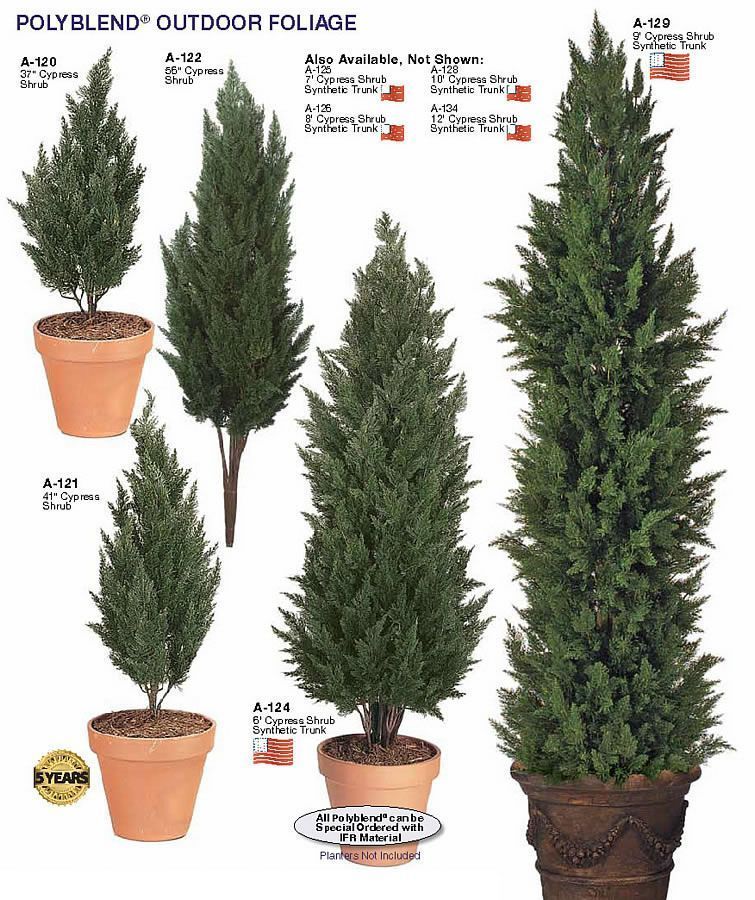
It’s around 15 feet tall at this point and it’s green all year with the most gorgeous dark waxy leaves and big white blooms. These can get 20 feet tall in around 7 or 8 years!
Check out this handy guide for planting Magnolias!
Green Giant Arborvitae
This species is one of my all-time favorites. Green Giant Arborvitae can grow 3-5 feet per year and will make a privacy screen in no time that stays green all year. Plant them at least 8-10 feet apart to give them room to spread out.
We found a few small ones at a local nursery for around $10 a piece and they are almost blocking the neighbor’s house in a few short years. This is one of the trees that you don’t have to spend a fortune on in the beginning!
Green Giant trees are an ideal budget-friendly option that will produce privacy quickly. This is also important if you’re doing the planting yourself. You can buy small trees that are super easy to plant without equipment other than a shovel.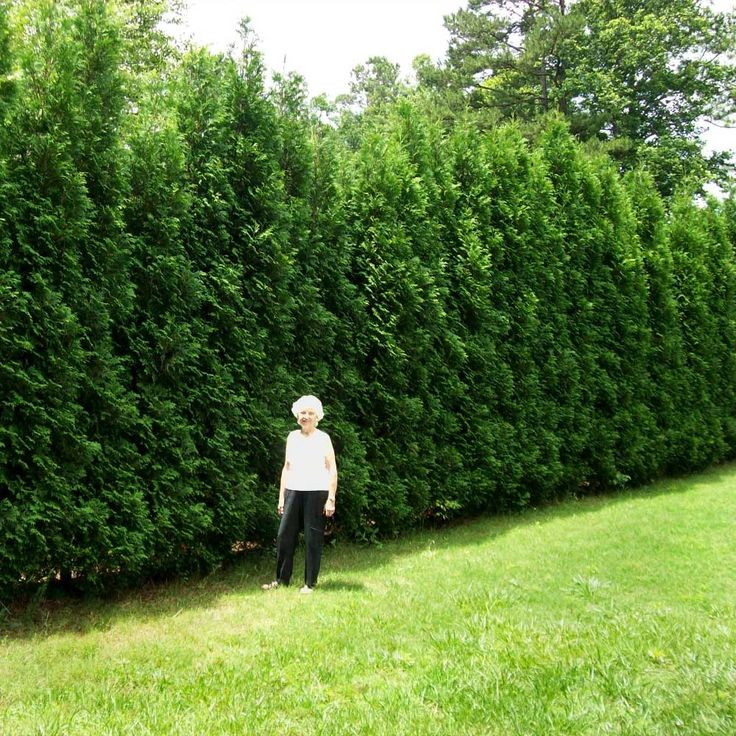
Holly
Holly trees can be used as bushes, hedges, trees, and privacy screens. Nellie Stevens Holly is one of the more popular varieties. You can plant these on the corner of your home and near a driveway due to a non-invasive root system. They can get up to 15-25 feet tall and 10-15 feet wide.
Beware of the prickly leaves though – they are no joke! These trees are perfect for landscaping though because they have a beautiful shape and pretty waxy green foliage.
Loropetalum
These are one of my favorite evergreen shrubs because of the color. They’re a gorgeous purple shade and at various times of the year, they have beautiful pink flowers. They grow quickly and they get full!
Give them plenty of room – as in at least 4-6 feet apart when planting. Make sure to choose a species that grows tall if you’re looking for a hedge or privacy – these include Burgundy, Purple Majesty, and Hines Purpleleaf. Expect about 10-15 feet tall at mature growth.
You will need to prune the Loropetalum as it can get wild-looking. I like the wild look, but my husband doesn’t. He prunes them into a more tame round shape several times a year.
Tea Olive (sometimes fast-growing)
These are sweet-smelling gorgeous shrubs with a beautiful green leaf. The Osmanthus Fragrans or Fragrant Tea Olive produces little, white fragrant flowers in the fall. We planted a row of these in between our house and the neighbor a few years ago and they are already nearly a privacy hedge!
However, I included these as “sometimes fast-growing” because it depends on where you plant them. We planted a row in the front yard that is in the vicinity of our septic lines (but not too close) and they are growing like crazy – they’ve tripled in size in just a few short years.
The ones we planted in the back that are farther away from septic lines are growing at a normal pace.
So – I didn’t want to leave the Tea Olives out because they’re too gorgeous not to include, but just know they might not grow as quickly as some of the others.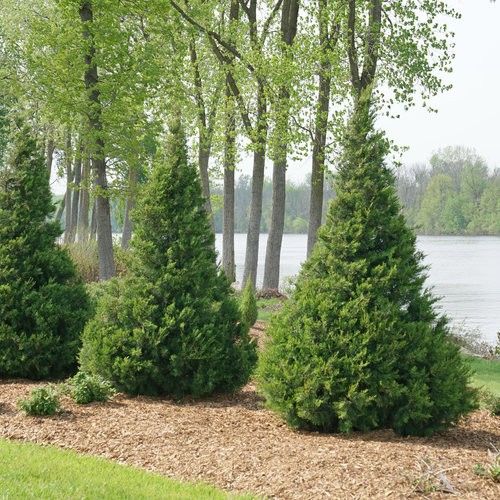
Golden Euonymus
Weird name, but a gorgeous evergreen shrub. If you want some variety in color instead of the typical green, these are it! Golden Euonymus has striking yellow/green foliage that stays beautiful year-round.
And they grow fast – they can get 10 feet high and 6 feet wide. These make an excellent hedge choice as you can shape them how you like and they are fairly easy to care for.
So there you have it – 7 fast-growing evergreen trees and shrubs you can choose this year and get beautiful plants in no time! Keep in mind to always pay attention to your planting zone. Before you invest in landscaping which can add up quickly – make sure you are planting appropriately for your climate.
I live in the South (Zone 8A according to the latest maps I could find) so these 7 plants are excellent choices for this planting zone. You can check yours here!
Pruning Tools for Trees and Shrubs
Most trees and shrubs are going to need to be pruned at some point.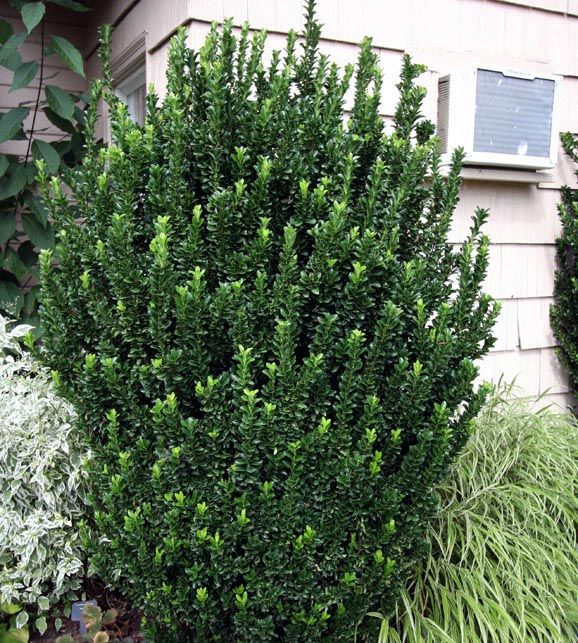 Usually, a few times a year in the fall and spring is ideal, but it depends on the variety.
Usually, a few times a year in the fall and spring is ideal, but it depends on the variety.
If you’re doing your landscaping yourself, you might want to invest in a few tools to make the job easier. There are manual pruners, loppers, electric pole saws, and so on.
Here are a few of our faves:
Affiliate links provided – see the full disclosure here. As an Amazon Associate, we may earn commissions from purchases.
- Handheld pruning shears – perfect for smaller jobs but effective. These are easy to store and easy to use for smaller pruning jobs. You wouldn’t want to prune an entire shrub or yard with these, but they are nice for quick jobs.
- Loppers – these are ideal for trimming branches that are a bit too thick for your small handheld pruners. Or for example, the suckers that grow from the mother plant of a crepe myrtle tree.
- Pole Saws – when the shrubs get bigger than you can handle with your own arms reach, it’s time to invest in a pole saw.
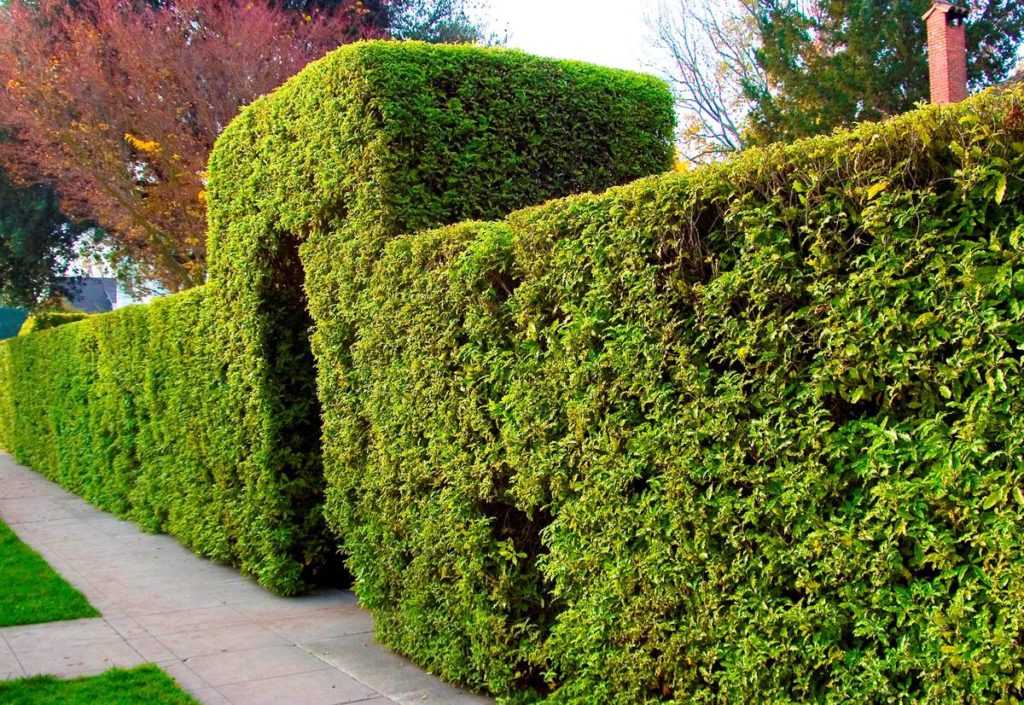 These will change the game for pruning. It’s quick and super effective.
These will change the game for pruning. It’s quick and super effective.
Happy Planting and Don’t Forget to Pin It!
- Share
- Tweet
what to plant and how to care
Reasons for a green fence
A shrub hedge attracts with its juicy bright color and spectacular geometry. In addition to decor, this eco-friendly solution performs a number of other important functions:
- fencing: planted along the perimeter of the property or along paths, plants form a natural “living fence”
- protection of the territory : thorny bushes for the hedge serve as an obstacle to entry into the area
- natural wind and dust barrier
- zoning: planting a "green wall" allows you to delimit the areas of the site and create nooks and crannies
- decoration: By varying the height and shape, experimenting with pruning, you can create almost any shape from a shrub
How to choose plants?
To decide which hedge meets your expectations, before planning your green fence, answer the question about its purpose and desired height.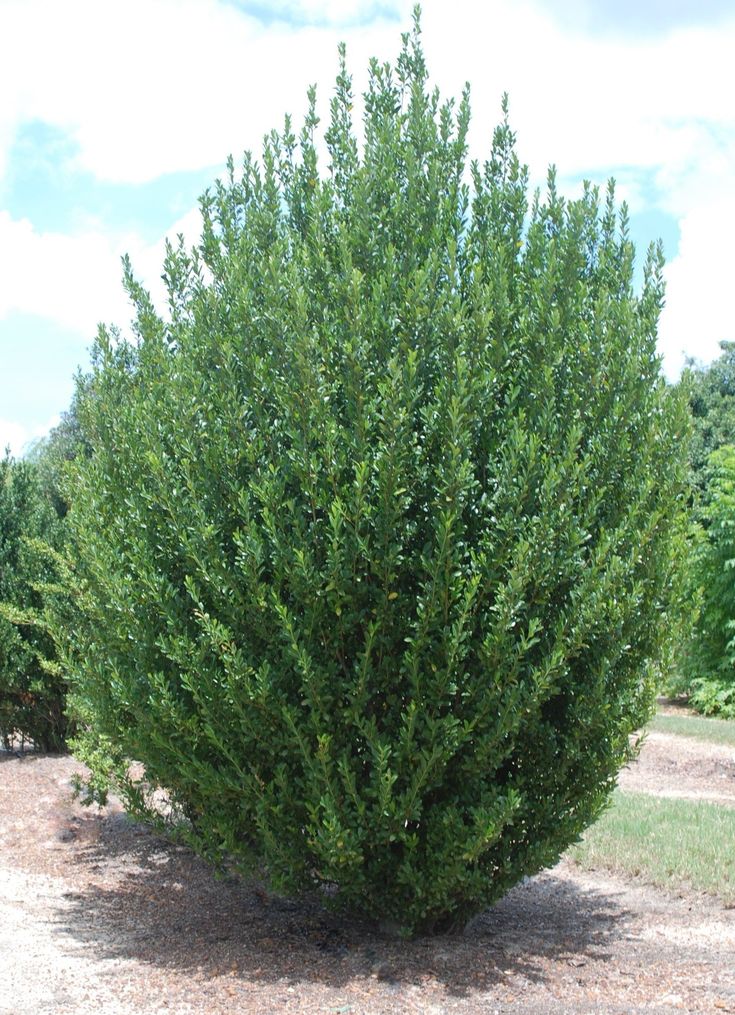 A curb shrub is suitable for edging flower beds and paths, and a tall thuja hedge will hide the area from prying eyes. Take into account the characteristics of hedge plants: the size of the bushes, the growth rate, how the young shoots are formed, what light, watering and soil conditions this or that variety prefers. nine0005
A curb shrub is suitable for edging flower beds and paths, and a tall thuja hedge will hide the area from prying eyes. Take into account the characteristics of hedge plants: the size of the bushes, the growth rate, how the young shoots are formed, what light, watering and soil conditions this or that variety prefers. nine0005
Hedge: what is the best fence to make?
There are more types and varieties of hedges than you can imagine. Breeding, growth shaping and pruning work wonders to turn pears and lindens into living walls. Thuja alone, the “classic” hedge plant, has dozens of varieties. Thuja is frost- and wind-resistant, belongs to the evergreen, is easy to cut and grows relatively quickly.
How to choose the best hedge arborvitae?
The most popular hedge plant is the fast-growing Brabant thuja. During the year, it adds 30-35 cm. However, it is worth considering that this variety is not green all year round - in winter its leaves turn brown. Another common type of thuja, Smaragd, grows slowly, has a cone shape, but remains green even in winter.
Another common type of thuja, Smaragd, grows slowly, has a cone shape, but remains green even in winter.
Which seedling age should I prefer? nine0048
Experts advise purchasing thuja seedlings about 4 years old. They quickly adapt to new conditions, and after 3-4 years you will enjoy a dense high fence. If older and taller seedlings are planted, then there is a risk of plant disease without careful professional care.
Plants that can be turned into a living fence
| Conifers: | yew, fir, spruce, juniper - fast-growing frost-resistant shrubs for hedges. They live for a long time and are suitable both for creating an impenetrable fence of several meters, and for zoning the site. nine0072 |
| Evergreen deciduous shrubs: | boxwood, laurel cherry, euonymus are unpretentious in care and are well pruned. A hedge of evergreen barberry is distinguished by the aroma of flowers and bright berries. A hedge of evergreen barberry is distinguished by the aroma of flowers and bright berries. |
| Deciduous ornamental shrubs | cotoneaster, spirea, hawthorn, barberry - allow you to create fences that are small in height, but varied in color schemes. nine0072 |
| Deciduous trees | such as beech or hornbeam are suitable for high green walls many meters high, but grow slowly and shed their leaves in winter. |
| Climbing plants require base | grids, fences, columns. Otherwise, they are not demanding, but not durable either. Hops, ivy, hydrangea are mostly used for vertical gardening in the warm season. nine0072 |
Hedge Plant Care Features
Thinking about the creation of a hedge in the Moscow region, it is necessary to take into account the climatic features of the region. The main threat comes from cold and frost.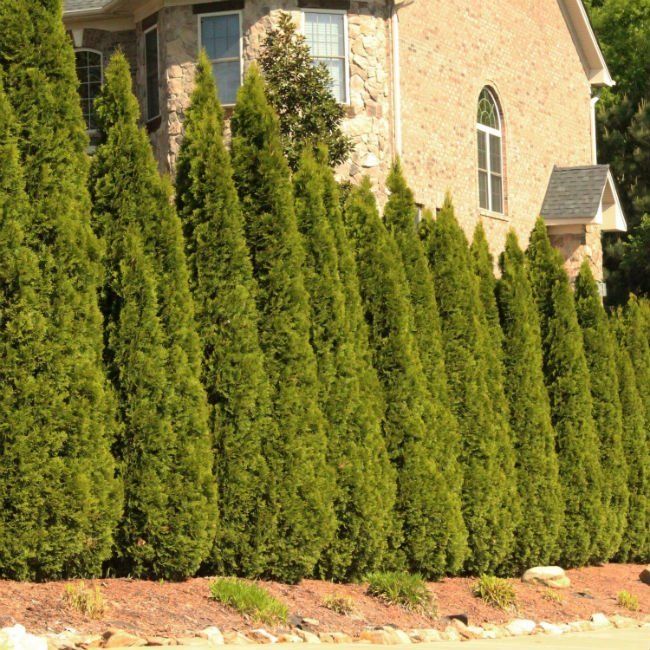 Therefore, when choosing plants, it is worth giving preference to hedge bushes of frost-resistant species. Another threat is the winter and spring sun. Thuja, in particular, is subject to burns from its awakened rays. Regular care is necessary to ensure that the hedge has many years of life and enjoy its beauty. nine0006
Therefore, when choosing plants, it is worth giving preference to hedge bushes of frost-resistant species. Another threat is the winter and spring sun. Thuja, in particular, is subject to burns from its awakened rays. Regular care is necessary to ensure that the hedge has many years of life and enjoy its beauty. nine0006
Basic Hedge Care Rules
Like any plant on the site, hedge shrubs require attention. Although each variety is individual, the main efforts fall on the period of pruning of plants, on which their health, external shape and density depend.
Shrub pruning
Pruning of berry bushes is recommended in early spring or late autumn, evergreens - in early summer. The crown formation procedure can be started from the first year of life. Use only a well-sharpened tool and do not forget about the precautions for yourself: a prickly hedge of barberry or hawthorn should be cut with tight gloves. nine0006
Preparing for the change of season
Sanitary pruning in the fall helps the plant to overwinter.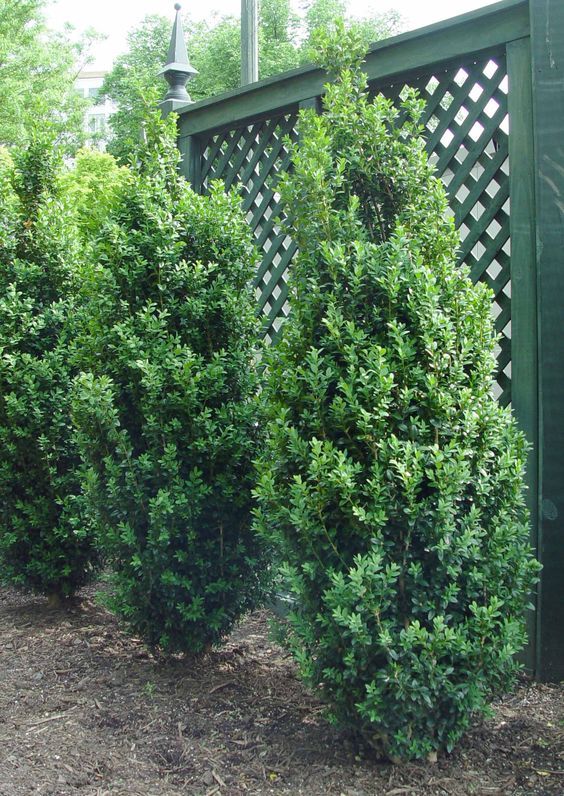 However, no matter how hardy hedges are, in some cases they need to be covered. At the end of autumn, cover young conifers with breathable material. In winter, to prevent mold and mildew, shake off the snow.
However, no matter how hardy hedges are, in some cases they need to be covered. At the end of autumn, cover young conifers with breathable material. In winter, to prevent mold and mildew, shake off the snow.
Not sure which hedge to choose? Need clarifications? Send your request to the feedback form, we will be happy to help. nine0034
9 fast growing evergreen shrubs | Gardening
Image - Flickr / Ruth Hartnup
Shrubs are plants that help us fill a garden, create hedges, shapes, or even delineate boundaries. . In this group we find deciduous species which lose their leaves at some time of the year; and evergreens, which remain evergreen. The latter are especially interesting, as it is always good to keep the green zone.
But if we want to be more precise,
Oleander (
Nerium oleander )- Image - Wikimedia/Colforn
La oleander or baladra It is an evergreen shrub growing from 3 to 4 meters in height.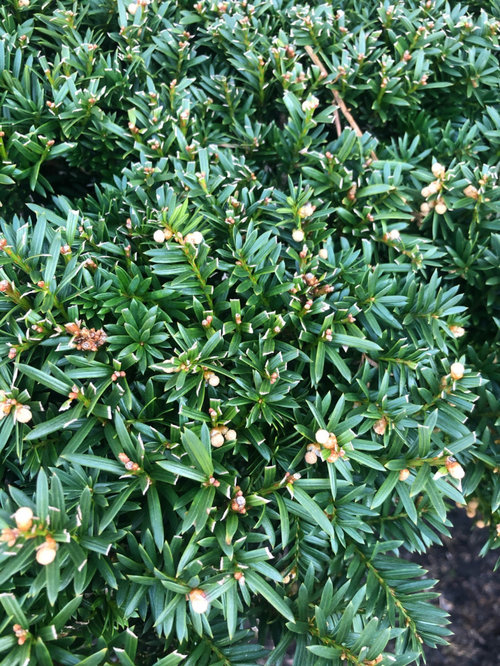 Its leaves are lanceolate, green or variegated (green and yellow) and produces pink, red or white flowers in spring and summer . It grows quickly and requires little maintenance other than regular watering and pruning. Withstands frosts down to -12ºС. But it is important to know that it is toxic if swallowed.
Its leaves are lanceolate, green or variegated (green and yellow) and produces pink, red or white flowers in spring and summer . It grows quickly and requires little maintenance other than regular watering and pruning. Withstands frosts down to -12ºС. But it is important to know that it is toxic if swallowed.
Privet (
Ligustrum vulgare )- Image - Wikimedia / Meneerke bloem
- Image - Wikimedia / Muriel Bendel
El privet It is an evergreen shrub reaching a height of 2 to 3 meters. It has evergreen foliage, green in color and elongated, as well as produces white flowers with a very pleasant aroma . Its fruits are black berries, not suitable for human consumption, as they are toxic. For this reason, it is not recommended to grow in places where there are children, but otherwise, if you place it in the sun and prune regularly, you will be fine. Maintains temperatures down to -18ºC.
Maintains temperatures down to -18ºC.
Selinda (
Philadelphus virginiana )- Image - Wikimedia/JoJan nine0177
- Image - Wikimedia/Forest and Kim Starr
- Image - Flickr / beautifulcataya
Known as selinda, selindo or false jasmine, it is an evergreen shrub reaching a height of 2 to 3 meters. Its ornamental value lies mainly in its flowers, which are white, very fragrant, clustered in summer. . There is a honey plant, so it attracts bees. To grow, it needs to be placed in the sun and watered from time to time. Well withstands frosts down to -18ºС. nine0006
Subscribe to our Youtube channel
Duranta (
Duranta erect )- Image - Flickr / Mauricio Mercadante
La Duranta It is an evergreen shrub growing from 2 to 4 meters in height. It may or may not have thorns, depending on the specimen, but it has spatulate or elliptical leaves in a beautiful green, and blue, white or purple flowers.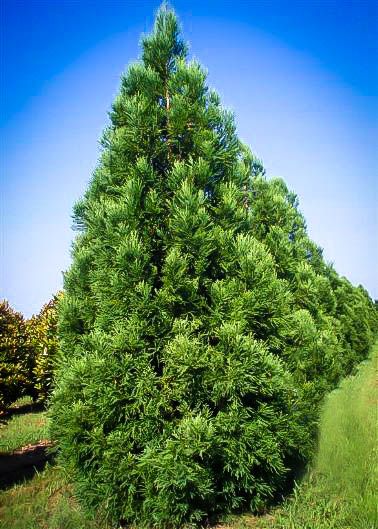 nine0141 emerges from the terminal stem in spring. Both the leaves and fruit are toxic, so if you have children and/or pets, keep them away from them. It needs sun and moderate to warm temperatures, as it is frost sensitive (tolerates specific frost down to -1ºC, but no more).
nine0141 emerges from the terminal stem in spring. Both the leaves and fruit are toxic, so if you have children and/or pets, keep them away from them. It needs sun and moderate to warm temperatures, as it is frost sensitive (tolerates specific frost down to -1ºC, but no more).
Evonimo (
Japanese spindle tree )- Image - Flickr / Leonora (Ellie) Enking
- nine0176 Image - Wikimedia/Salix
- Image - Wikimedia/Kenpei
El eponymous Known as bonnet or husera, it is one of the fast growing perennial trees or shrubs most widely used in temperate regions. If allowed to grow freely, it can reach a maximum height of 8 meters, but the most common is pruning to keep it at a height of 2 or 3 meters. nine0141 . You need to be in a sunny place and get water from time to time, because it does not withstand drought. It tolerates frosts down to -18ºС very well.
Photinia (
Photinia x fraseri )- Image - Flickr / Krzysztof Ziarnek, Kenraiz
- Image - Wikimedia / Hedwig Storch
- Image - Wikimedia / Father Igor nine0177
Photinia is an excellent hedge shrub.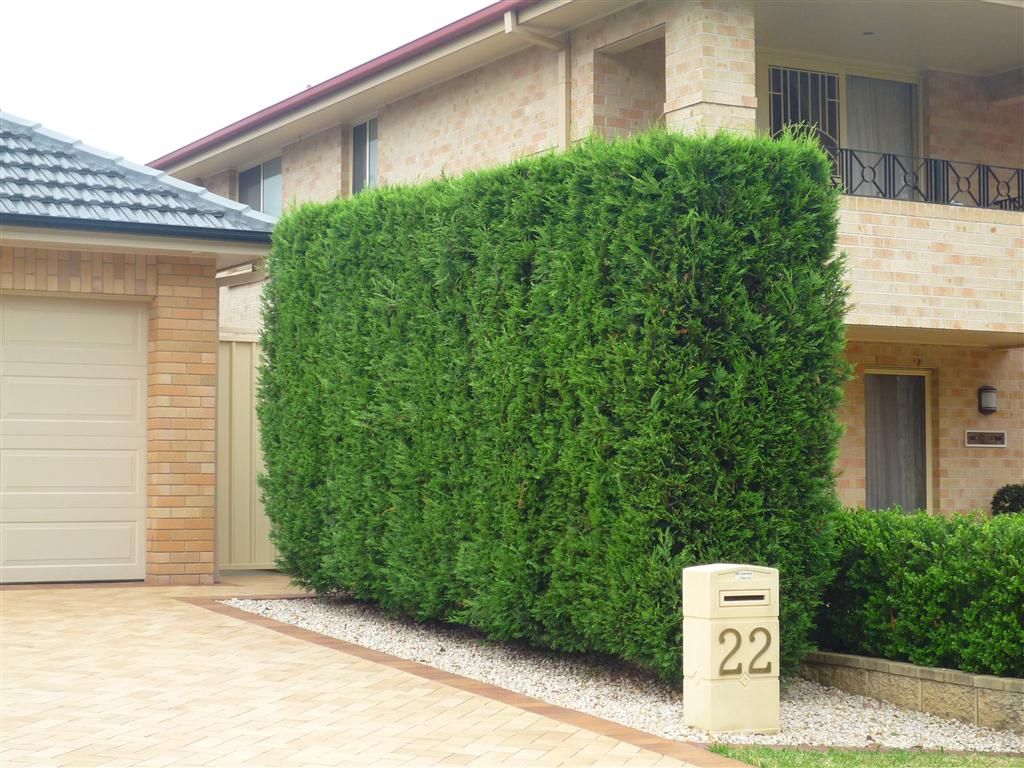 Reaches a height of 3-4 meters, has beautiful green leaves in the form of a spear. Growing Photinia x fraseri 'Red Robin ', known as red photinia, is even more beautiful if possible because the new leaves are red before maturity . Of course, it is important that it is placed in a sunny place and watered from time to time. It tolerates pruning well, as well as frosts down to -12ºС.
Reaches a height of 3-4 meters, has beautiful green leaves in the form of a spear. Growing Photinia x fraseri 'Red Robin ', known as red photinia, is even more beautiful if possible because the new leaves are red before maturity . Of course, it is important that it is placed in a sunny place and watered from time to time. It tolerates pruning well, as well as frosts down to -12ºС.
Cherry laurel (
Prunus laurocerassus )- Image - Wikimedia / H. Zell
El Cherry Laurel or Lauroceraso It is actually an evergreen tree growing to 6-8 meters tall, but it tolerates pruning so well that it is widely used as a shrub. Its foliage is glossy dark green with a leathery texture. In spring it produces very fragrant clusters of white flowers. nine0141 . It is a poisonous plant, except for the pulp of its fruits, which are black drupes. Requires direct sunlight and regular watering.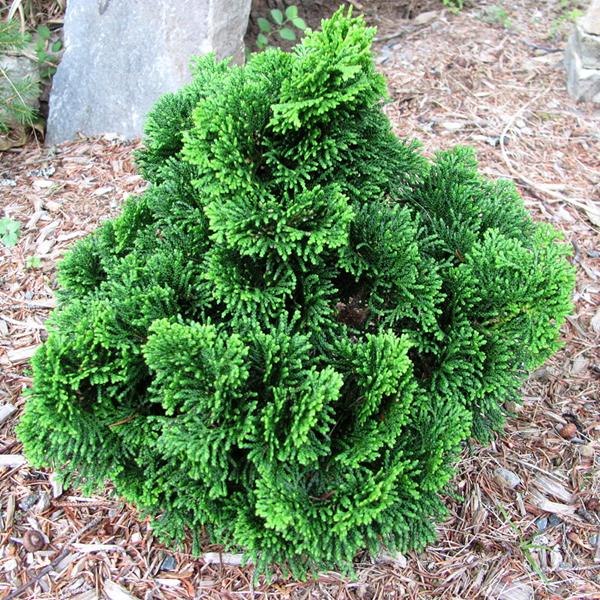 Maintains temperatures down to -15ºC.
Maintains temperatures down to -15ºC.
Pitimini rosebush
- Image - Flickr / Enrique Dans
- Image - Flickr / Jose M. Carralero
El rosebush pitimini or mini rosebush is an evergreen shrub that reaches a height of up to 1 meter, although it is normal that it does not exceed 60 centimeters. This is a mutation that occurred in the seventeenth century and still fascinates flower lovers. nine0140 Its flowers can be red, yellow, white or pink and appear in spring and summer. . But this plant needs to be in full sun and pruned relatively often for it to flower properly. In addition, it is important to protect yourself from frost.
Yucca (
Yucca desmetiana )- Image - Wikimedia/Raffi Kojian
- Image - Flickr / Gordon KA Dickson nine0177
La Yucca desmetiana This is a small plant no more than 3-4 meters high, which performs the same function as a traditional shrub; that is, you can use it as a low hedge that defines the path, plant it separately around the garden, or grow it in a pot.